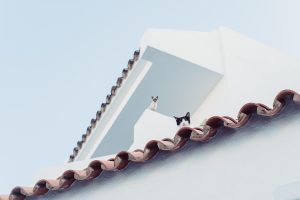
Cats are beloved companions known for their playful nature, agility, and, perhaps most prominently, their need to scratch. Providing a suitable scratching post for your feline friend is not only essential for the well-being of your furniture but also pivotal for the mental and physical health of your cat. This comprehensive guide will walk you through the critical aspects of choosing the perfect scratching post, ensuring your cat remains happy and healthy.
Understanding the Importance of Scratching
Scratching is a natural and instinctual behavior for cats. It serves several purposes, including:
- Maintaining Claw Health: Scratching helps remove the outer sheath of the claw, keeping it sharp and healthy.
- Marking Territory: Cats have scent glands in their paws, and scratching leaves both a visual mark and a scent mark, helping them establish territory.
- Stretching and Flexing: It provides a full-body stretch, which is essential for their muscle health and flexibility.
- Stress Relief: Scratching can serve as a stress reliever, allowing cats to expend energy and frustration.
Types of Scratching Posts
There are various types of scratching posts available, each catering to different feline preferences:
Vertical Scratching Posts
Most cats enjoy vertical scratching posts as they allow for an excellent stretch. These posts should be tall enough for your cat to extend its body fully. Ensure stability, as a wobbling post can deter use.
Horizontal Scratching Pads
Some cats prefer horizontal surfaces. These can be ideal for cats that scratch carpets or floors. They are often made of cardboard or sisal and can be placed on the ground.
Inclined Scratching Boards
Inclined boards offer a sloped surface that can appeal to cats who like both horizontal and vertical scratching. These are versatile and can fit various spaces within a home.
Multi-Level Cat Trees
These structures offer more than just scratching surfaces. They provide entertainment, exercise, and resting areas. Cat trees are ideal for multi-cat households and for cats who enjoy climbing.
Materials for Scratching Posts
The material of a scratching post can significantly affect whether your cat will use it. Here are common materials used:
Sisal Rope or Fabric
Sisal is a natural fiber that is durable and provides excellent resistance for claws. Most cats find this material satisfying to scratch.
Carpet
Carpet-covered posts can mimic the texture of household carpets, appealing to cats who scratch flooring. Ensure the carpet is tightly woven to prevent snagging.
Cardboard
Cardboard scratchers are affordable and replaceable. They allow cats to sink their claws in deeply, offering a satisfying scratch.
Wood
Some cats enjoy the hard surface of wood. Posts made of natural wood can be a durable option, though they might not appeal to all cats.
Choosing the Right Size and Stability
When selecting a scratching post, consider the size and stability:
- Height: Ensure the post is tall enough for a full stretch. Ideally, it should be at least 30 inches high for adult cats.
- Base Width: The base should be wide enough to prevent tipping. A stable post is more likely to be used by your cat.
- Multiple Options: In multi-cat households, providing several posts can prevent territorial disputes and ensure everyone has access.
Placement of the Scratching Post
The location of the scratching post is crucial for encouraging use:
- High-Traffic Areas: Place the post in areas where your cat spends a lot of time, such as near sleeping or feeding areas.
- Near Furniture: If your cat is scratching furniture, place the post nearby to offer an alternative.
- Windows and Sunlit Spots: Cats enjoy basking in the sun, so placing a post near a window can increase its appeal.
Encouraging Your Cat to Use the Scratching Post
If your cat is reluctant to use the new scratching post, try these tips:
- Use Catnip: Sprinkle catnip on the post to attract interest and encourage scratching.
- Positive Reinforcement: Reward your cat with treats or affection when they use the post.
- Interactive Play: Use toys to lure your cat towards the post, encouraging them to explore it.
- Model Behavior: Gently place your cat’s paws on the post to show them how to scratch.
Maintenance and Replacement
Regular maintenance of the scratching post is essential for ongoing use:
- Inspect Regularly: Check for wear and tear. Posts that are too worn may need replacing to continue satisfying your cat’s scratching needs.
- Vacuum or Clean: Remove fur and debris from the post to keep it inviting and hygienic.
Conclusion
Choosing the right scratching post for your feline friend is a crucial step towards ensuring their happiness and health. By understanding your cat’s preferences and needs, selecting the appropriate type and material, and placing it in an optimal location, you can provide an enriching environment that satisfies your cat’s natural instincts. Remember, a well-chosen scratching post not only preserves your furniture but also contributes to a content and well-adjusted feline companion.
By investing time in understanding and catering to your cat’s scratching behavior, you foster an environment where your pet can thrive, leading to a harmonious relationship between you and your furry friend.
#ChatGPT assisted in the creation of this article.







